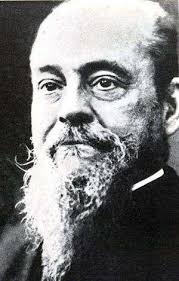How can a world-famous productivity concept help you write faster?
If you’re worried that you’re wasting all your writing time on the wrong things, the 80/20 rule for writing can help you better direct you energy, time, and attention.
In fact, small, simple tweaks can make a massive difference to your writing productivity.
Clue: if you’re spending too much on a first draft, you’re missing out on an opportunity to write faster, better.
After writing online for three years, I’ve learned how to use the 80/20 rule to speed up my writing process.
As a result, I write articles in less time — without compromising on quality.
In this post, I’ll look at how you might apply the 80/20 rule to your writing process.
How to Use the 80/20 Rule for Writing
Getting stuck at any point in the writing process is frustrating.
Fortunately, it’s easy to unblock yourself using the 80/20 rule for writing.
Chances are you’ve heard of the Pareto principle and seen it being applied to a range of industries.
Here’s a quick recap:
The Pareto principle is named after Italian economist Vilfredo Pareto. Pareto found that 80% of Italy’s wealth was owned by 20% of the population. Since then, the concept’s been applied to management, sales, marketing and productivity. All of these industries used the Pareto principle to identify priority areas.

At its core, the message is simple: 80% of your results will come from 20% of your actions.
So, what is the 80/20 rule for writing?
Applied to writing, the 80/20 rule means you should invest most of your time in the parts of the writing process that matter the most, like editing and refining your ideas.
My strategy is to speed through a first draft. I’ll devote the bulk of my writing time in rewriting and editing.
This is an approach I’ve learned from successful writers and authors.
It’s worked for me, hopefully it can help you too.
Now, let’s look at parts of the writing process in detail. Consider your writing process and evaluate whether you’re spending too much energy and attention on the wrong things.
Let’s begin.
1. Ideas Don’t Need to be Perfect Before You Write
How do you come up with ideas for your content?
Idea generation is a hugely important part of the writing process — you can’t write at all if you have nothing to write about. The best approach is to constantly gather ideas so you can always tuck into a treasure trove of potential topics.
Set aside time to read books in your field and from other disciplines. You don’t need to read several chapters each week; I’m usually reading a few pages from different books.
Use tools like Feedly and Alltop to aggregate trending stories across fields for quick, daily updates.
But whatever you do, don’t delay writing because you want your idea to be perfect.
Research has shown we develop new thoughts during the writing process.
One strategy that has helped me is to start writing with a general idea. I use the freewriting strategy, so I write nonstop for at least 10 minutes. Most times the final article is different from the initial idea.
Long story short, document ideas as they come and refine them as you write.
In this blog post, bestselling writer Daniel Pink shares his tips for collecting ideas.
2. Have Something to Say
The reality is other writers have already written about your topic. Unless you’re in an obscure niche, millions of words have been dedicated to your subject.
But, none of them have your perspective.
As you work through your idea, ask yourself:
“What do I want to say?”
This guiding question is one of the most important elements of writing.
F. Scott Fitzgerald said:
“You don’t write because you want to say something, you write because you have something to say.”
Keep in mind that you want to have something to say that someone wants to hear. In other words, think of who might benefit from reading your article. For some time, I was my own ideal reader. I wrote about things that I wanted to read and learn about.
As far as 80/20 writing rule goes, figuring out what you want to say deserves a fair chunk of your writing time.
3.Use Outlines to Structure Your Ideas
Since I have started outlining, I write faster. Much faster.
In this article, the Purdue Online Writing Lab, sums up the key steps for creating an outline:
- Determine the of purpose of your post
- Define your audience
- Decide on the central argument of your article
The full post discusses the detail of creating an outline.
Depending on what works for you, you can use an outline before you start writing. Or, after you’ve done your research.
Typically, I spend less than 20 minutes outlining my post; however, when I’m submitting a guest blog post, I’ll usually do far more detailed outlines.
I use Workflowy to outline key sections and the main points I want to make in each section. For pieces that require lots of statistics and research, I’ll list the data I need here, too.
Trick is to use whatever approach works for you. Though, adding any type of outline – whether bare bones or super in-depth – can speed up the overall process.
Before outlining, I’d be moving things around while I was writing the post. Now, it usually flows because that scaffolding is already holding my thoughts in place, making sure my arguments follow logically.
Here’s an example of an outline for this blog post:
- Intro
- Bridge
- Middle
- Idea generation
- Outline
- Research
- First draft
- Polish
- Proofreading
Conveying my own struggle with spending too much time on the wrong parts of my writing process
Introduction to 80/20 and background on how I approached this blog post
4. Don’t Get Stuck on Research
It’s easy to get lost in rabbit hole when you’re researching for a blog post.
For me, I realised research was a form of procrastination. Writing is hard, so lengthening the research delays the tough part.
And that’s how I’d found myself with a Google Doc of 56 pages that needed to be distilled into a 1000-word blog post.
It’s tiring.
Try this technique:
Do some upfront research when you need more general information on the topic. Sometimes, you might be able to complete outline and first draft at the start. Then, fill in the gaps with the research.
This approach has saved me hours.
5. Race Through Messy First Drafts
Confession time.
Sometimes, my first drafts are so bad I question whether I am fit to write professionally.
And because of this belief, I used to spend way too much in this stage.
There’s the quote, attributed to Ernest Heminway:
The first draft of anything is s***
We can all take comfort in Hemingway’s advice.
Get your first draft down quickly so you can move to the next stage. Finishing your first draft removes the overwhelm that comes with staring at an empty page.
6. Take Your Time to Re-envision Your Writing
After you have your first draft, you can begin to refine your work.
In this video, writing professor and author Peter Elbow said the revision stage is where you “re-envision” your article.
It’s where you examine what you have said and whether you thoughts flow logically.
Once I start polishing, I elaborate on my analysis. I make sure my piece is conversational, because most of my first drafts are terse.
Other activities you might include here:
- Rearranging paragraphs
- Adding supporting anecdotes
- Removing ideas or points
As you read your article, ask yourself whether each statement is clear for the reader.
This is my favourite part of the writing process. So, I try to spend the most time here.
This is a trick I learned from KM Weiland, from Helping Writers Become Authors.
Weiland said we all have different rhythms. To become a better writer, she suggests structuring your process so you spend more time on the parts you enjoy.
7. Fix Errors With Proofreading
Before you hit publish – preferably a day after you’ve finished writing your post – give your piece a quick scan to check for any glaring errors. Check for inaccuracies, major typos, and other mistakes.
Tools like Grammarly or Hemingway Editor can help.
What I’ve presented here isn’t necessarily a blueprint. But I’m on a path to learning better ways to do work, and I hope these tips about the 80/20 rule for writing can help you, too.
Try to think about the parts of creating content that take too long, and the writing tasks you dread.
Is this where you need to be directing most of your effort?
Can you set up a process to generate ideas consistently? Will this save time? Will it make creating content more fun?
On which activities can you focus to get the most results?
Consider your content creation process, give the 80/20 rule for writing a try and see what happens.
You may find you have energy to write content you’re truly proud of.
